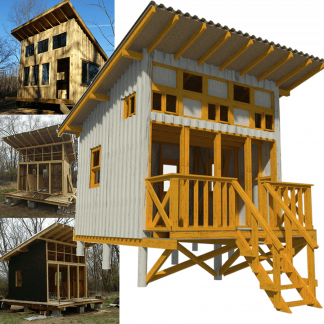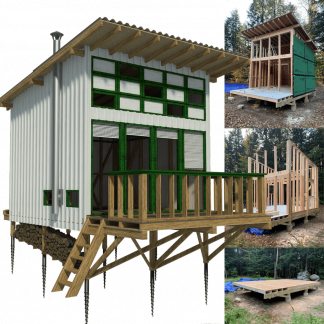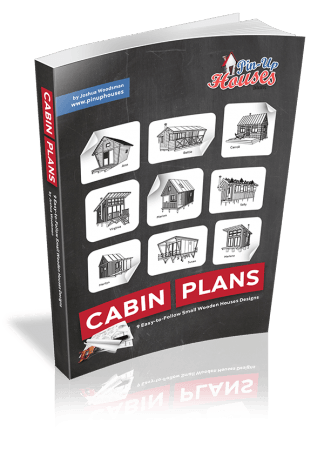A refrigerator usually runs quietly in the background, so it is easy to forget about it until something goes wrong. In Atlanta’s heat and humidity, even a minor issue can quickly lead to spoiled food, water on the floor, and a lot of frustration for the whole household.
Most people will try a few simple things before calling anyone: adjusting the thermostat, flipping the breaker, or wiping away some dust. That is a reasonable place to start, but once those basic steps stop working, guessing can get expensive. At that point, it is usually smarter to reach out to a local technician, whether you live inside the city or in nearby suburbs and towns such as Dunwoody. Many homeowners in that area end up looking for services like appliance repair in Dunwoody when their own attempts do not solve the problem and the fridge still misbehaves.
When the Fridge Does Not Feel Cold Enough
One of the most common complaints is that the fridge does not feel cold enough. You open the door and the air feels closer to room temperature than it should, milk spoils sooner than expected, and a simple thermometer shows readings that are higher than recommended. Often the cause is something as basic as condenser coils covered in dust or vents blocked by food containers, but there can also be trouble with the fan that moves cold air around or with the compressor and control electronics at the back of the machine. It makes sense to start by setting the fresh food section around thirty-seven to forty degrees and the freezer close to zero, then moving items away from interior vents and cleaning the coils carefully. If, after these steps, the refrigerator still struggles, the constant warmth or repeated warm-and-cool cycles usually mean it is time for a professional to take a closer look.
When the Freezer Is Cold but the Fridge Is Warm
Another pattern Atlanta homeowners notice is that the freezer still feels fine, but the fresh food section turns warm. This happens a lot in frost-free models, where cold air is supposed to move from the freezer into the refrigerator compartment. Ice building up on the hidden evaporator coils, a fan that only runs sometimes, or a damper door that stays closed can all lead to this split personality: frozen groceries on top, limp vegetables below. You can sometimes see the clue on the back wall of the freezer in the form of thick frost. Unplugging the appliance and letting it thaw, with towels placed around it, can melt the blockage and bring back airflow for a short time. When the frost returns quickly or the fan starts squealing or refusing to spin, that usually points to deeper issues in the defrost system or control board that call for proper tools and training.
Leaks, Puddles, and Drain Problems
Water on the kitchen floor is another situation that makes people stop and pay attention. A small puddle in front of the refrigerator, or water collecting inside under the drawers, usually means something is wrong with drainage or a supply line. In many cases, the defrost drain that carries meltwater to a pan under the unit is clogged with food debris or ice. Other times the drain pan itself has cracked or shifted, or a plastic water line feeding the ice maker or dispenser has come loose. Homeowners can carefully look for standing water or ice at the rear interior drain hole, slide the unit out to check the pan underneath, and examine the visible water line for drips. If leaks keep coming back even after clearing what you can see, or if water seems to be seeping from inside the walls of the fridge, it is safer to have a technician track down the hidden cause before floors, cabinets, and nearby trim are damaged.
Frost Buildup and Door Seal Issues
Frost is another recurring theme. A light coating of frost in the freezer is normal, but thick, snowy buildup around the door, on shelves, or on food usually points to warm, damp air sneaking in where it should not. A worn or torn door gasket often sits at the center of this story. Over time, the rubber seal hardens, cracks, or pulls away from the frame, and every opening adds more warm air that freezes inside. Occasionally a container or shelf keeps the door from closing fully, especially when the fridge is packed. For homeowners, it helps to feel along the gasket for gaps, clean it gently, and pay attention to whether a thin sheet of paper stays firmly in place when closed or slides out without resistance. When frost returns quickly after a full manual defrost, or when you see odd patterns of ice on the internal coils, the issue may be in the sealed refrigerant system or defrost components, which are not safe to tackle without experience.
Ice Maker Trouble and Empty Bins
A broken ice maker tends to show up right when you want cold drinks the most. In summer especially, people notice that the bin stays empty, fills only halfway, or contains small, hollow cubes. The story often starts with a kinked or clogged water line, a valve that no longer opens fully, or an ice fill tube that has frozen shut. Basic checks include confirming that the ice maker is actually switched on, making sure the water shutoff valve behind the fridge is open, and straightening any visible kinks in the tubing. If the tray never fills, or the valve clicks but no water flows, or the ice maker cycles but drops only odd-shaped cubes, it usually means there is a bad valve or internal ice maker part that needs to be tested and replaced by someone with the right parts and meters.
Unusual Noises and Changing Sounds
Noise changes are another clear signal that a refrigerator wants attention. Owners get used to the normal background hum, so rattling, grinding, banging, or a high-pitched whine stands out immediately. Often the source is a fan motor near the back or inside the freezer that is wearing out, a loose drain pan vibrating against metal, or a compressor that has started to struggle. Leveling the fridge, pulling it slightly away from the wall, and listening carefully can help you figure out whether the sound comes from inside, behind, or underneath. But when the noise grows louder over time, seems to come from the compressor itself, or is paired with poor cooling or rapid cycling on and off, it is a sign that a technician should investigate before a complete failure leaves you without refrigeration at all.
When the Refrigerator Runs Almost Constantly
Some Atlanta homeowners notice that their refrigerator seems to run almost constantly. In warm weather, that appliance will naturally work harder, but it should still have periods of rest. When it does not, dirty condenser coils, leaky door gaskets, temperatures set unnecessarily low, or faulty sensors and controls may all play a part. Cleaning the coils, checking that doors close snugly, and avoiding over-stuffing the compartments can reduce the workload. If the compressor continues to run nearly all the time and the interior still does not feel right, or if certain spots are freezing while others are too warm, that kind of uneven performance suggests a control or sealed system issue that calls for testing beyond basic homeowner tools.
Persistent Odors That Will Not Go Away
Odors are a quieter but very stubborn problem. Most smells come from forgotten leftovers or spills and clear up after a basic clean-out. When the fridge still smells bad even after shelves, bins, and gaskets have been washed and odor absorbers like baking soda or charcoal packs have been placed inside, something deeper may be going on. Liquids can seep into insulation or hidden channels, drain lines and pans can grow mold, and past power outages can leave lingering contamination. If you have already done a thorough cleaning and aired out the appliance with the doors open, yet the smell lingers or you see mold in seams and hard-to-reach areas, it is worth talking with a repair specialist about whether parts can be accessed and cleaned or if more serious steps are needed.
Water Dispenser Issues and Poor Taste
Water dispensers in the door bring their own quirks. Over time, the flow can become weak, stop entirely, or the water may start to taste off. Often the solution is as simple as replacing an overdue water filter, which clogs gradually as it does its job. In some cases, though, the small line running through the door freezes, or the inlet valve at the back of the fridge fails. Changing the filter on schedule and using the dispenser regularly helps keep things moving, but if a fresh filter does not restore flow or taste and the household tap water is fine, the underlying parts should be checked by someone familiar with that model.
Control Panel and Light Problems
Modern refrigerators usually include digital displays, touch buttons, and LED lights, and these can misbehave as well. Owners notice when buttons stop responding, numbers flash or show odd codes, or lights flicker or stay on even with the door closed. Confirming that the outlet works and that the breaker has not tripped is always worthwhile. When the controls remain stubborn, show unfamiliar messages, or you notice any burning smell or discoloration around the control area, it is important to unplug the appliance and arrange for a professional assessment rather than continuing to use it.
Knowing When to Call a Professional
In the end, a simple rule can help you figure out when to keep working on a problem yourself and when to get help. A homeowner with basic equipment can typically safely clean coils and gaskets, change the temperature, change the water filters, and clear obvious obstructions. To make the choice easier, a lot of individuals follow these two basic rules:
- Handle routine care yourself, such as cleaning, leveling, filter changes, and obvious visual checks.
- Call a technician for anything involving refrigerant, wiring, sealed system parts, or problems that keep coming back after basic fixes.
Anything in that second group is better handled by a trained technician, especially if the appliance is still under warranty. Taking that balanced approach protects both your food and your fridge. If you would like to learn more about what a typical service visit looks like in the Atlanta area, how estimates are prepared, or what questions to ask before approving a repair, you can review information offered by local specialists such as Noble – BHS and use it to make more confident decisions about your next steps.








